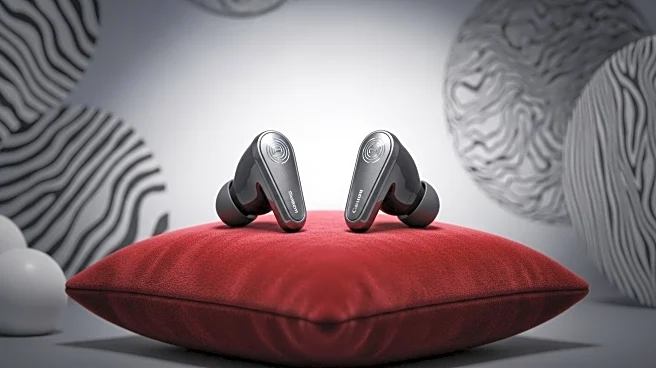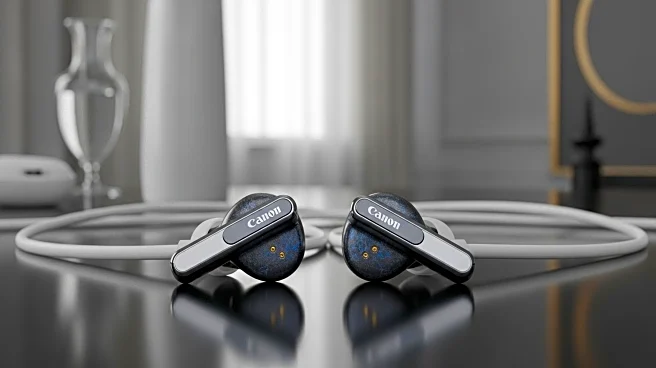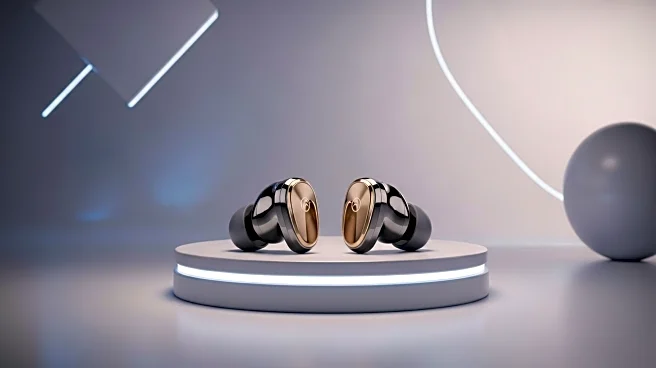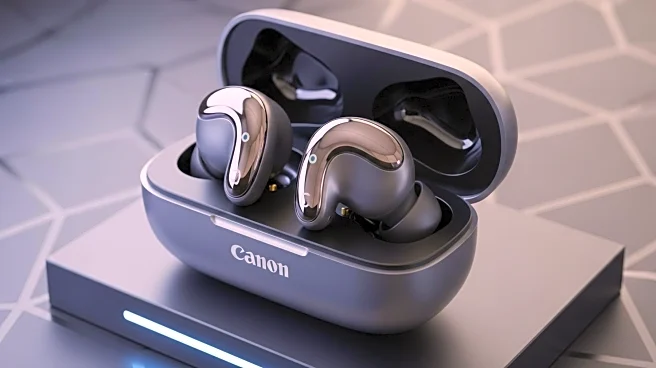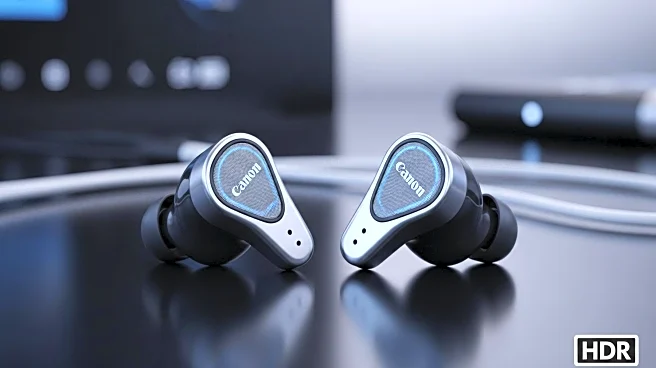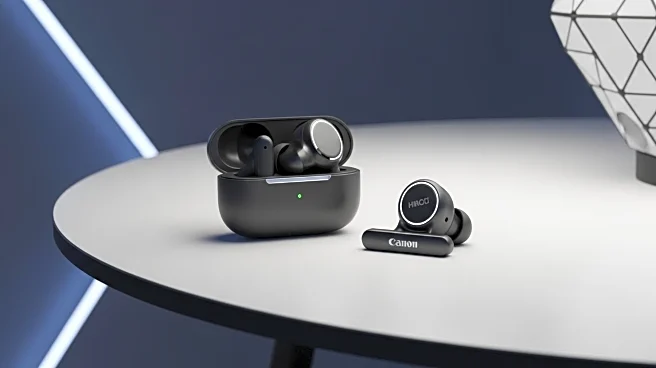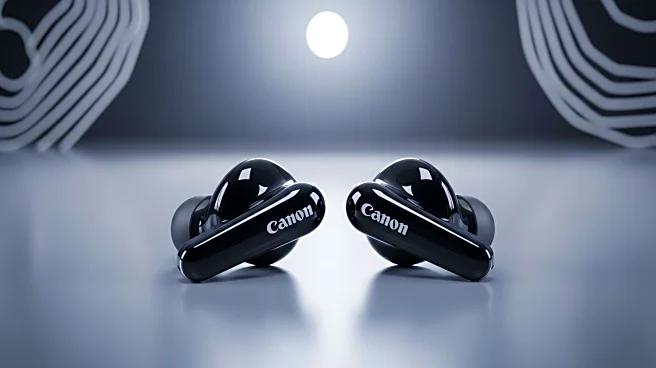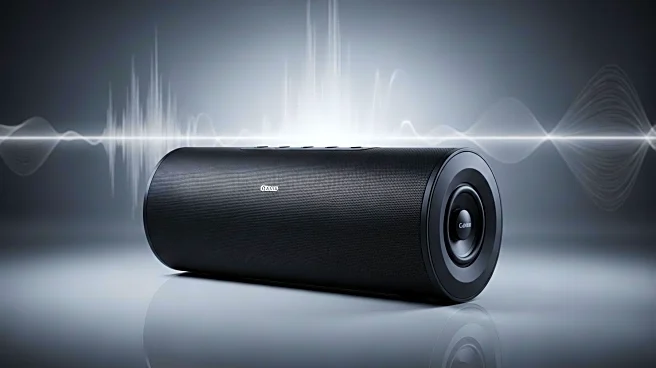What's Happening?
Bang & Olufsen has introduced its latest Beo Grace earbuds, priced at $1,500, featuring a sophisticated aluminum design and advanced active noise cancellation technology. The earbuds utilize 12mm titanium drivers and six microphones to adjust audio based on ambient noise and ear shape. They support Dolby Atmos spatial audio and include tactile controls and 'NearTap' technology for volume control. The earbuds offer 4.5 hours of battery life with ANC enabled, and come with a matching aluminum charging case that can function as an audio transmitter. Preorders are available now, with shipping starting November 17th.
Why It's Important?
The introduction of the Beo Grace earbuds marks a significant development in the luxury audio market, highlighting Bang & Olufsen's commitment to high-end design and technology. The earbuds' advanced features, such as spatial audio and adaptive noise cancellation, cater to audiophiles seeking premium sound experiences. The high price point reflects the brand's positioning in the luxury segment, potentially influencing consumer expectations and competitive strategies in the audio industry. This launch may drive innovation and set new standards for premium audio products.
What's Next?
As the Beo Grace earbuds become available for preorder, consumer response will likely shape future product developments and marketing strategies for Bang & Olufsen. The company may focus on enhancing battery life and expanding compatibility with various devices. Competitors in the luxury audio market may respond by introducing similar high-end features or adjusting pricing strategies to compete with Bang & Olufsen's offerings. The earbuds' performance and reception could influence the direction of future audio technology advancements.
Beyond the Headlines
The launch of the Beo Grace earbuds raises questions about the sustainability and environmental impact of luxury tech products. The use of aluminum and advanced technology may prompt discussions on resource consumption and product lifecycle management. Additionally, the high price point may spark debates on accessibility and the role of luxury brands in democratizing technology. These considerations could influence consumer perceptions and brand reputation in the long term.

